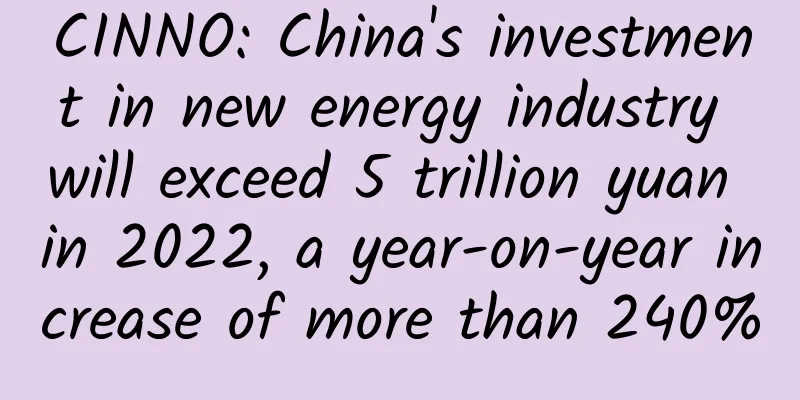Why is pottery fired at 1000°C and porcelain fired at 1200°C?

|
Ceramics, an art form that combines traditional Chinese culture with modern art, has been loved by many parents and children in recent years. Image source: hippopx In life, the word "ceramics" is often on our lips, so many people think that ceramics is the name of an object. But do you know that "pottery" and "porcelain" are not the same thing. Ceramic brothers Generally speaking, "pottery" is a vessel made of clay (such as the famous Terracotta Warriors), while "porcelain" is a vessel made of porcelain clay. "Ceramics" is a general term for "porcelain", "ceramic", and "pottery". The birth time of "pottery" and "porcelain" is also different. China's pottery production dates back more than 10,000 years, while the production of porcelain dates back only more than 3,000 years. Any vessel made from two different types of clay, pottery clay and porcelain clay, and processed through processes such as mixing, molding, drying and firing can be called "ceramic". The most accurate definition of "ceramics" is that it is a naturally carved or artificially synthesized powdered compound that is formed and fired at high temperature. There are also many records about "pottery" in history. The history book says: "Shennong made pottery when he was farming"; "Records of the Grand Historian" says: "The Yellow Emperor ordered Ning Feng to be the pottery master". It is enough to show that "pottery" already existed in my country in ancient times. Image source: hippopx According to unearthed cultural relics, China had already produced "painted pottery" as early as the Neolithic Age between 3500 and 1500. The earliest historical record of "porcelain" was found in "Shuowen Jiezi" written by Xu Shen in the Han Dynasty. The literal meaning explained in the book shows that "porcelain" belongs to the next stage of "pottery". It is no exaggeration to say that if the technology of making pottery had not been invented at that time, or if the relevant production methods had not been continuously improved after its discovery, "porcelain" would not have been able to exist as a separate vessel. When "porcelain" appeared, "pottery" was still widely produced. "Porcelain" did not replace "pottery", but each party developed independently. The difference between pottery and porcelain First of all, the firing temperatures of pottery and porcelain are different. However, the firing method is the same, "bisque firing". Bisque firing means that the surface of the work is not glazed and it is fired directly. The bisque firing temperature of pottery is usually between 900°C and 1000°C, while that of porcelain is between 1100°C and 1350°C. It can be seen that adding fire and heating to the production of pottery turns pottery into porcelain. Secondly, the raw materials of pottery and porcelain are also different. Pottery is usually made of clay or green clay in nature (the raw materials of refined pottery are clay), and in addition, appropriate amounts of feldspar and quartz are added. The raw materials of porcelain are mainly porcelain clay, clay, porcelain stone, feldspar, quartz, etc. Image source: hippopx Some porcelains need to use specific kaolin as raw materials, because if ordinary clay is used as raw materials, when the bisque firing temperature reaches 1200°C, these porcelains will be melted into glass instead of porcelain. Moreover, the process after selecting the raw materials also needs to be extremely meticulous. Whether it is washing, crushing (coarse and fine crushing), stirring water or adding a certain amount of iron, every link needs to be very rigorous. Finally, the glazes of pottery and porcelain are also different. The so-called "glaze" is the smooth and shiny outer shell attached to the surface of the vessel. The glaze of porcelain is mainly quartz, which is a high-temperature glaze and has a smooth surface after firing. Pottery is usually not glazed, and if it is glazed, it is only low-temperature glaze. Therefore, the surface of pottery is not as smooth as porcelain. Although it is slightly rough, it has good air permeability. How to distinguish between "pottery" and "porcelain" in daily life The shape of pottery generally appears to be somewhat rustic and rough from the outside, and because the temperature is not very high during firing, the embryo has not been completely sintered, so the nature of the pottery is rough. If you tap its surface lightly with your fingers, you will find that the sound is relatively "dull", and metal is prone to scratches when it passes over the surface. Even if the surface is thin, the inside will not be translucent. Porcelain is more common in our daily life, including porcelain bowls for eating, porcelain cups for drinking, tiles in the bathroom, etc. Porcelain is more delicate and elegant in shape, and it makes a crisp sound when knocked, and it is difficult to scratch it with metal. Porcelain can transmit light when illuminated by a flashlight, and has the property of being translucent. In the more than 100 years from the end of the Qing Dynasty to the present, the ceramic industry in my country has been rising from the bottom, from traditional handicrafts to modern technology. As one of the most representative things in China, ceramics have been stepping onto the world stage. END Review expert: Zhu Guangsi, member of Beijing Science Writers Association Tadpole Musical Notation original article Editor/Xiao Xitushuo |
>>: It has just been announced that the LPR has been lowered, your mortgage may become cheaper!
Recommend
Suitcases "fall from the sky"! Don't do this, it's too dangerous!
Recently, a woman in Hangzhou, Zhejiang, placed a...
iOS 15 new features fully exposed: "Find" will bring 3 major upgrades, Apple fans: It's amazing
Not only that, after upgrading to iOS15, Apple wi...
Google Translate APP is banned! App Store rankings are rising rapidly.
Maybe everyone knows it. On March 29, Google upda...
Tesla achieves Model 3 mass production target, but bankruptcy concerns remain
Not long ago, Musk said that Tesla had achieved i...
How can I retrieve my Mini Program account? What should I do if I forget my Mini Program login password?
Q: How do I retrieve my Mini Program account? Wha...
Apple Developer Affairs Contact Email List
[email protected] - The status of the app and i...
ESA sent a glass of "juice" to Jupiter, or will it reveal the mystery of the "ice moon" there?
Jupiter is the largest planet in the solar system...
The competition for multi-core smartphones stalls, putting MediaTek at a disadvantage
As mobile phone hardware performance shows signs ...
iOS 19 leaks are here, and the first new feature is exposed!
Although the official version of iOS 18 has only ...
Analysis of public opinion in the automotive industry in March 2023
According to statistics from the China Associatio...
The price hike strikes again: How can small and medium-sized refrigerator companies survive?
Hard times are still continuing in the refrigerat...
The high-definition schematic diagram of the Chinese space station is here! Common terminology knowledge post for manned space flight, it is recommended to collect
With the safe return of the three astronauts Zhai...
The "green" wind of future travel: What kind of sparks will be created when wind meets electric vehicles?
Your browser does not support the video tag Autho...
JAC officially signed a contract with Huawei to cooperate in car manufacturing. What do you think of Huawei's car series?
For the current new energy vehicle market, Huawei...
Are highways free during the Dragon Boat Festival? 2020 Dragon Boat Festival Holidays and Highway Tolls
How many days will the Dragon Boat Festival be th...









